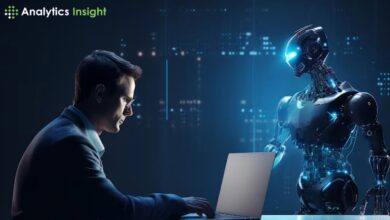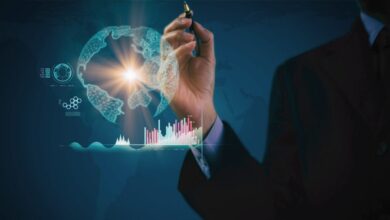Will AI Take Over Data Analytics?

has become a transformative force across industries, revolutionizing the way organizations analyze and leverage data. In the realm of , and algorithms have significantly enhanced efficiency, accuracy, and insights, leading to speculation about the future role of AI in . In this article, we’ll explore the question: Will AI take over data analytics? We’ll debunk myths, explore realities, and discuss the symbiotic relationship between AI and
Myth: AI Will Replace Data Analysts
One common misconception is that AI will completely replace human data analysts. While AI can automate routine tasks and analyze vast amounts of data at scale, human expertise is still essential for tasks such as interpreting results, understanding the business context, and making strategic decisions. Rather than replacing data analysts, AI augments their capabilities, enabling them to focus on higher-value tasks such as data interpretation, storytelling, and decision-making.
Reality: AI Enhances Data Analytics
In reality, AI serves as a powerful tool for enhancing data analytics capabilities. AI-powered algorithms can process large datasets quickly, identify patterns and trends, and generate actionable insights. Machine learning models can analyze historical data to make predictions and recommendations, empowering organizations to make data-driven decisions with greater confidence and accuracy. By automating repetitive tasks and uncovering hidden insights, AI frees up data analysts to focus on more strategic and creative aspects of their work.
Myth: AI Is a Replacement for Traditional Analytics Tools
Another misconception is that AI will replace traditional analytics tools and techniques. While AI offers advanced capabilities for processing and analyzing data, traditional analytics methods such as descriptive and diagnostic analytics remain valuable for understanding historical trends, monitoring performance, and identifying areas for improvement. AI complements traditional analytics tools by providing additional capabilities for predictive and prescriptive analytics, enabling organizations to gain deeper insights and drive better outcomes
Reality: AI and Traditional Analytics Coexist
In reality, AI and traditional analytics coexist within a broader analytics ecosystem. Organizations leverage a combination of AI-powered tools, traditional analytics software, and human expertise to extract value from their data. While AI excels at processing large volumes of structured and unstructured data and uncovering complex patterns, traditional analytics methods provide context, interpretation, and domain expertise. By integrating AI with traditional analytics approaches, organizations can leverage the strengths of both to maximize the value of their data.
The Symbiotic Relationship Between AI and Data Analytics
Rather than viewing AI as a threat to data analytics, it’s more accurate to see AI as a catalyst for innovation and transformation within the field. AI augments the capabilities of data analysts, enabling them to extract deeper insights, make more accurate predictions, and drive better business outcomes. By embracing AI-powered tools and techniques, organizations can unlock the full potential of their data and gain a competitive edge in today’s data-driven world.
Conclusion
In conclusion, while AI has transformed the field of data analytics, it is not poised to “take over” in the sense of replacing human analysts or traditional analytics tools. Instead, AI enhances data analytics capabilities, enabling organizations to analyze data more efficiently, uncover actionable insights, and drive better decision-making. By embracing the symbiotic relationship between AI and data analytics, organizations can harness the power of data to fuel innovation, drive growth, and achieve their strategic objectives in an increasingly digital and data-driven world.



